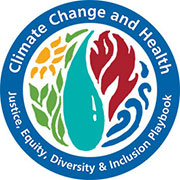Step 3: Assess public health interventions
 Selecting community adaptation programs to lessen the impacts of climate change, with a specific focus on vulnerable populations
Selecting community adaptation programs to lessen the impacts of climate change, with a specific focus on vulnerable populations
For Step 3, consider the most suitable health interventions for the identified climate-related health impacts of greatest concern in the jurisdiction. To jumpstart brainstorming, see examples of interventions (i.e., smart urban design, environmental controls, training health care providers) on this section’s key resource. BRACE grantees partnered with CDC to produce intervention literature reviews to support getting started on this step.
BRACE Step 3 requires a review of scientific, evidence-based reports and community-based data from existing assessments and plans, a review of community priorities already identified, cross-sector and interdisciplinary groups, focus groups, or informational interviews. Planners can also review lessons learned from past interventions and learn from similar jurisdictions who may be further down the path. Consider selecting interventions that would support or be complimentary to ongoing adaptation work in the community. Learn from community partners’ expertise in what desired and effective climate adaptation looks like and work together to identify interventions that can enhance their vision and strategies.
Prioritize upstream changes more likely to address root causes of inequity
When adaptation actions only focus on individual behaviors, the symptoms of inequity may be addressed, but not the root causes. By focusing on upstream changes, which are often policy oriented, you may be able to alter some of the social determinants of health that exert such a strong influence on health outcomes. This often implies cross-sectoral collaboration across levels of governance with agencies of labor, transportation, education, corrections, economic development, housing and public safety (i.e. Health in all Policies). This may also take the form of participating in health impact assessments (i.e. Health Impact Assessment, Promoting Equity through the Practice of Health Impact Assessment) and equity impact assessments for proposed policies stemming from other sectors.1
